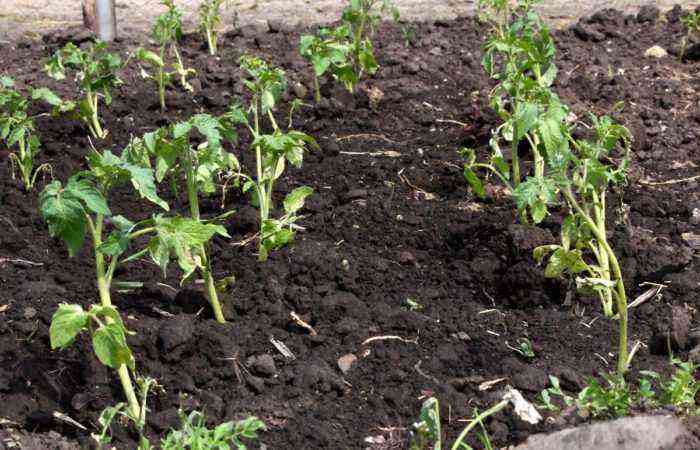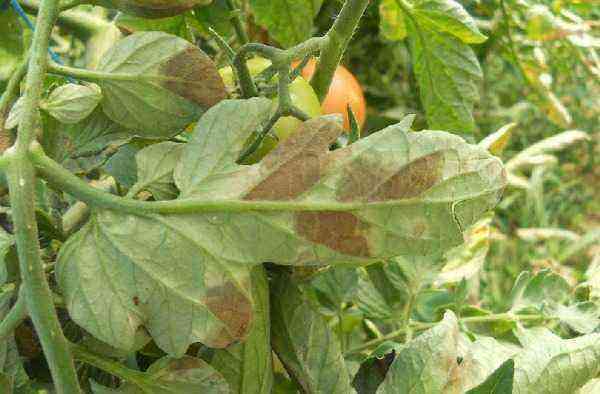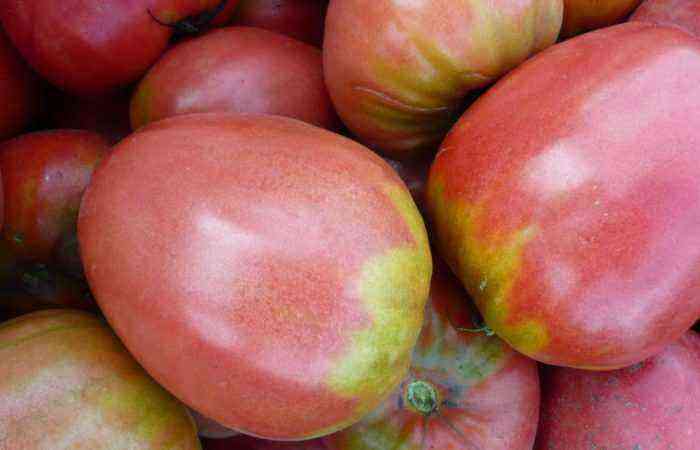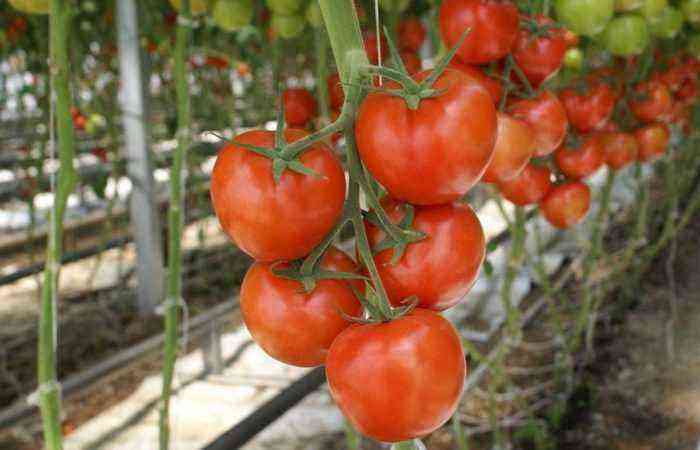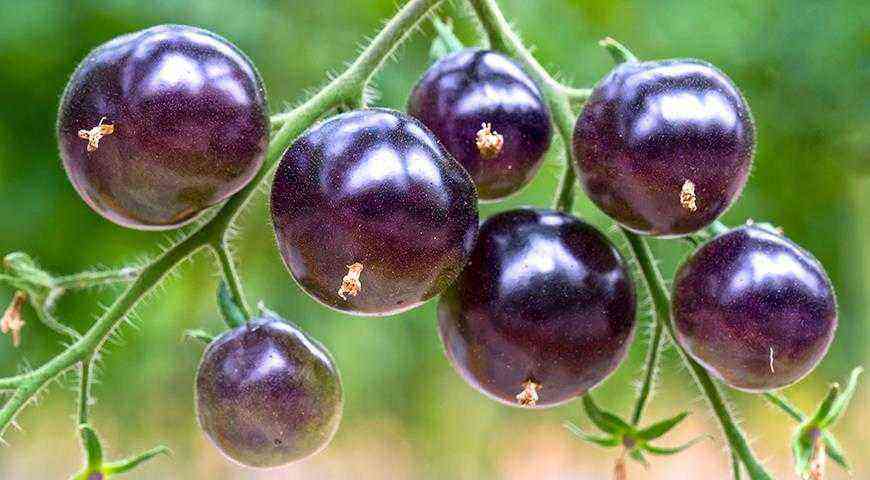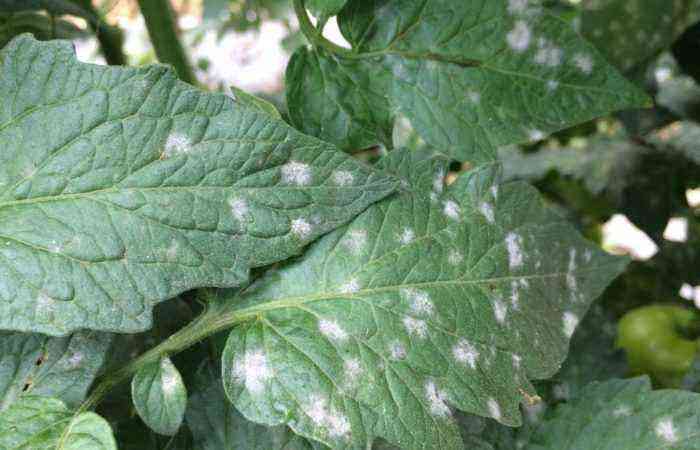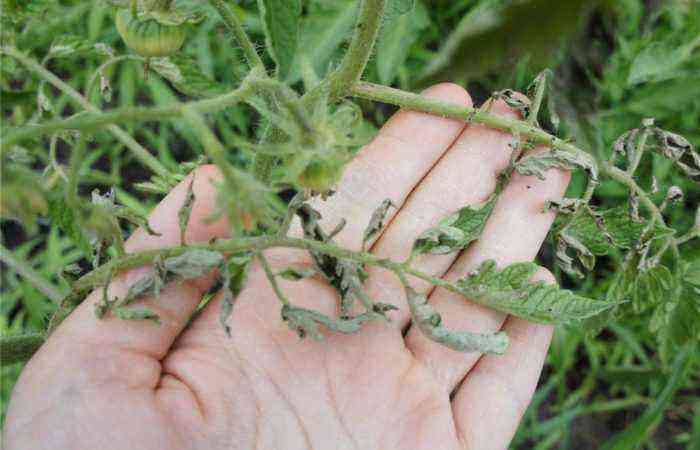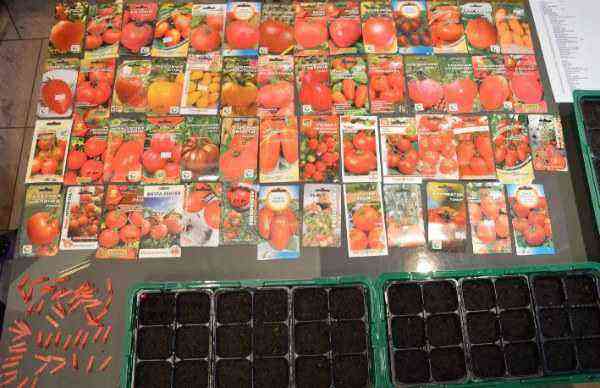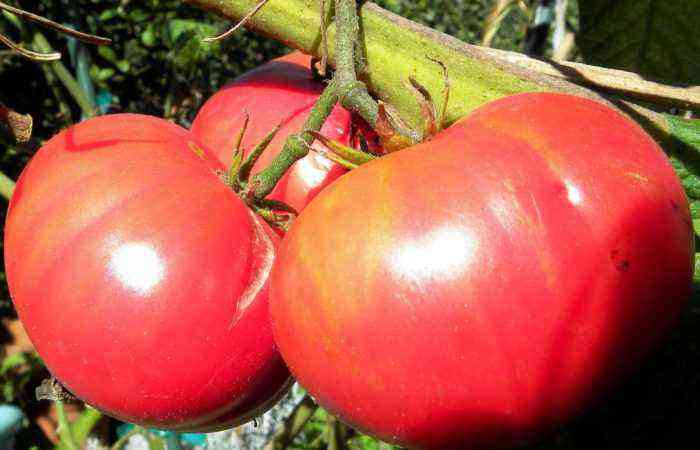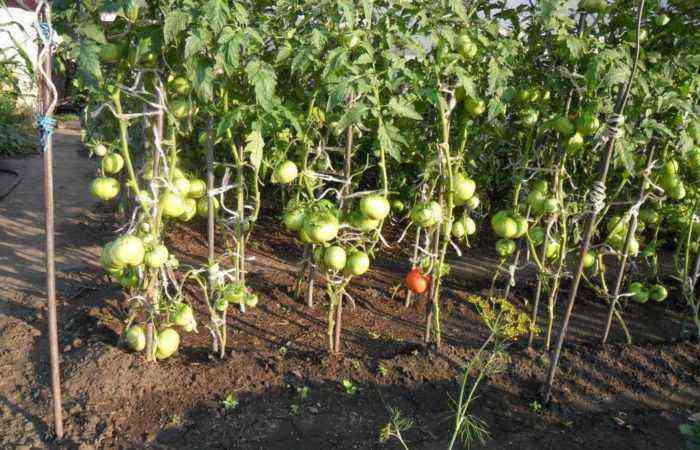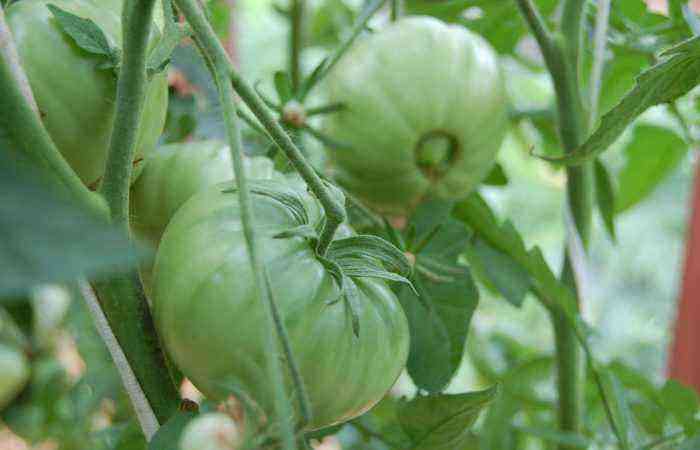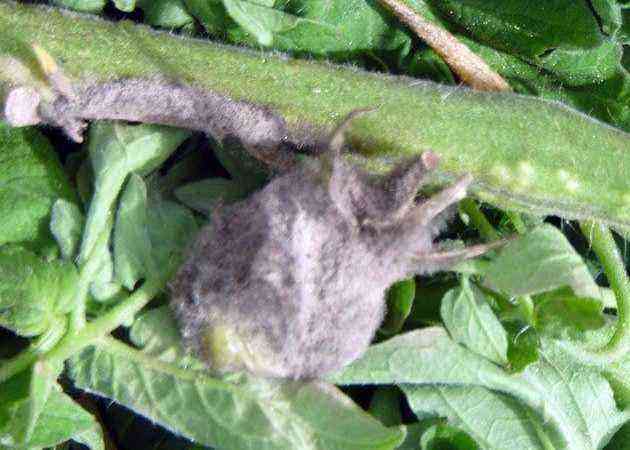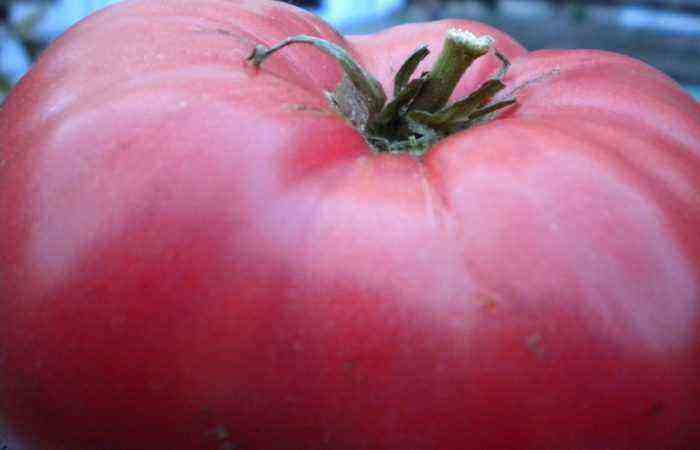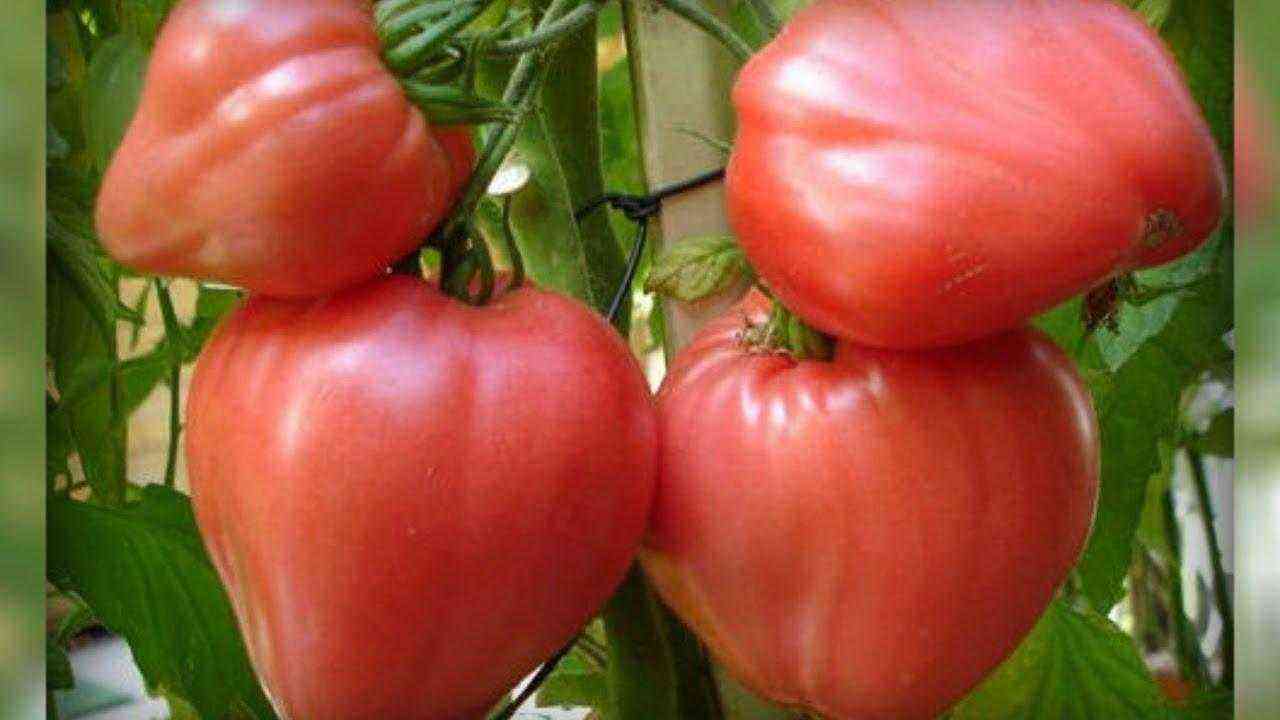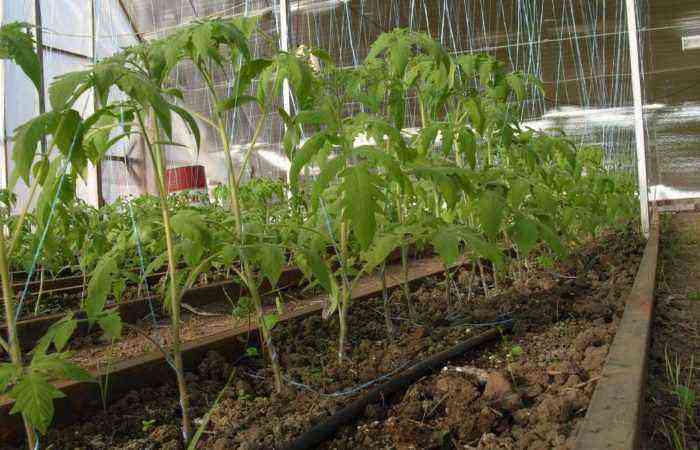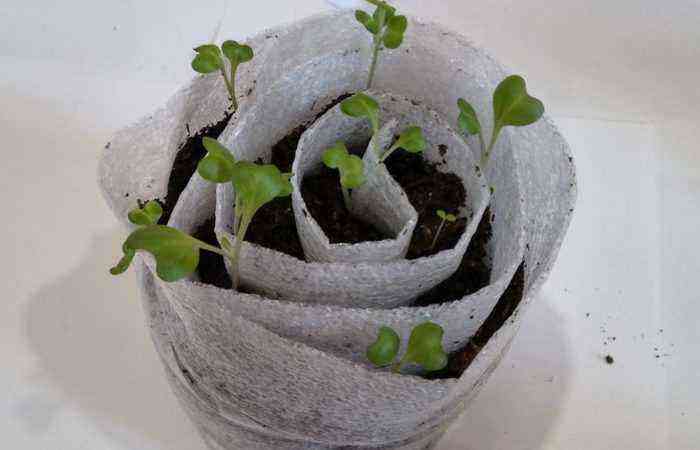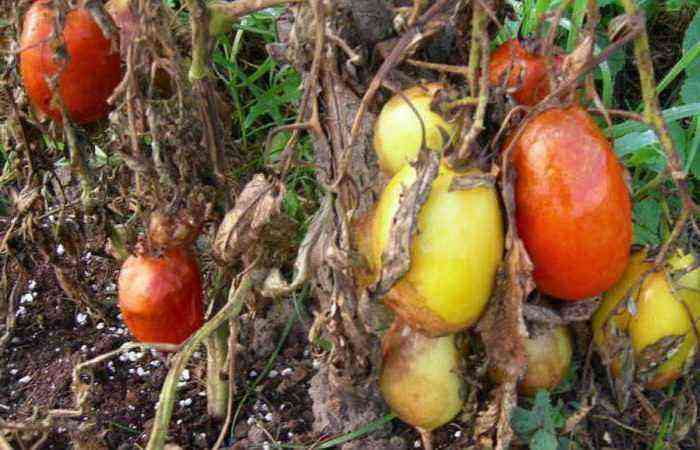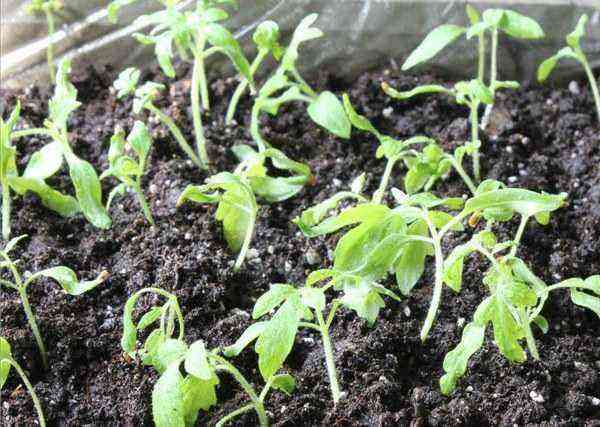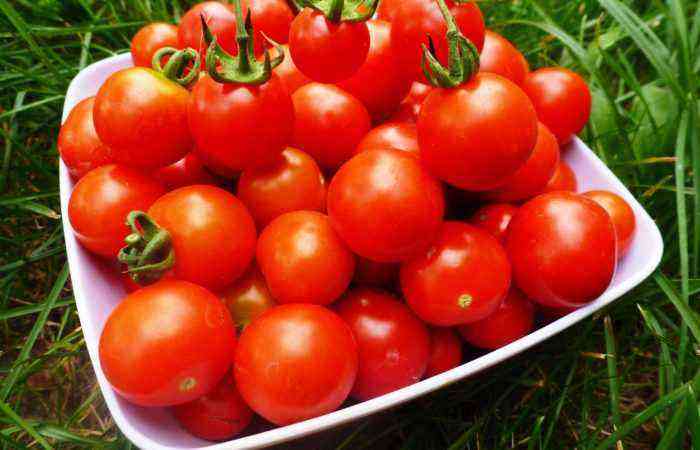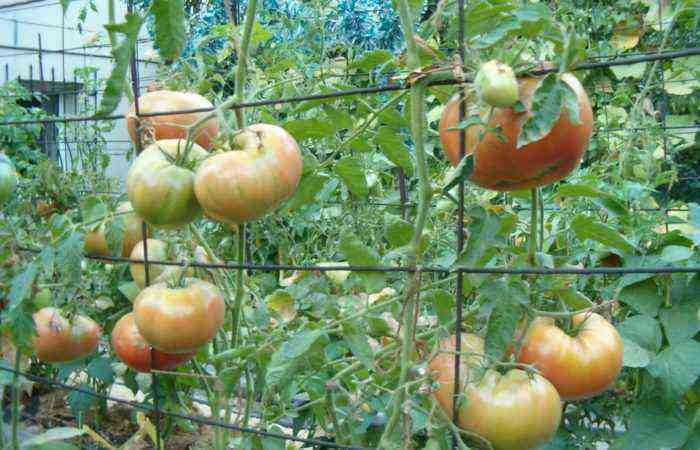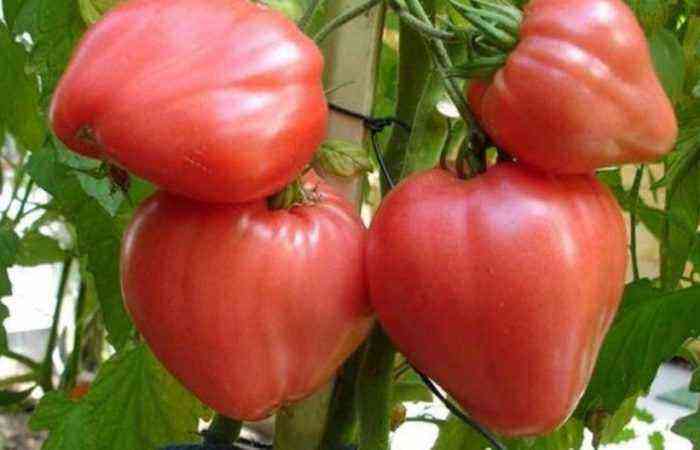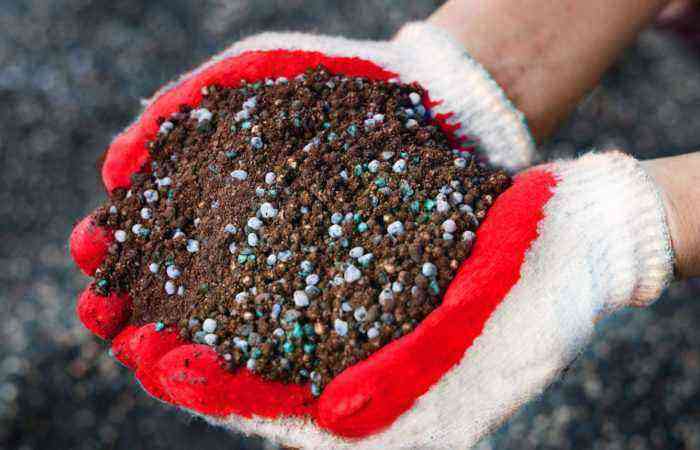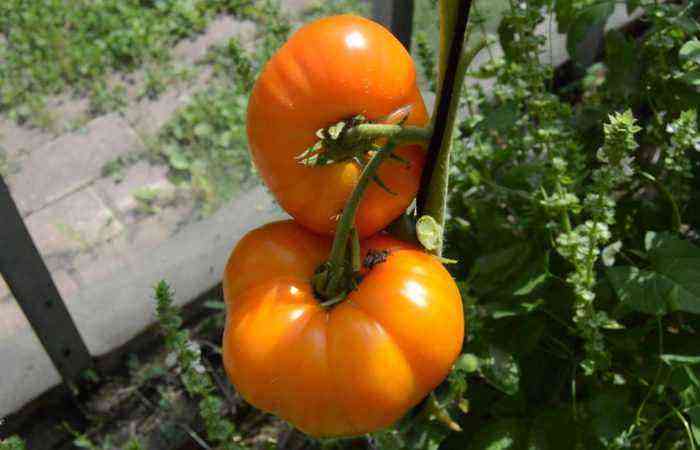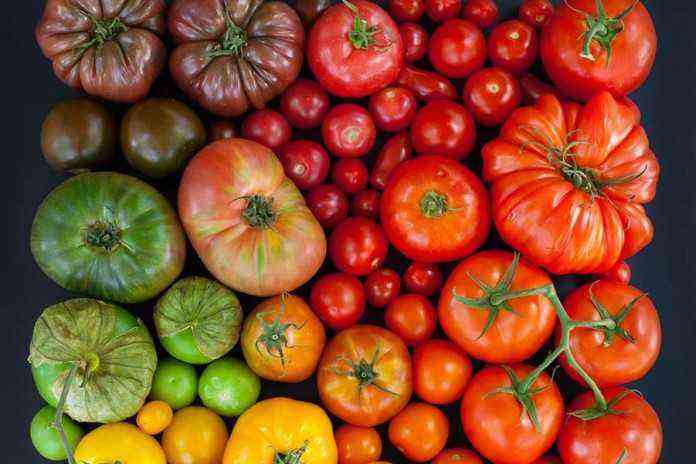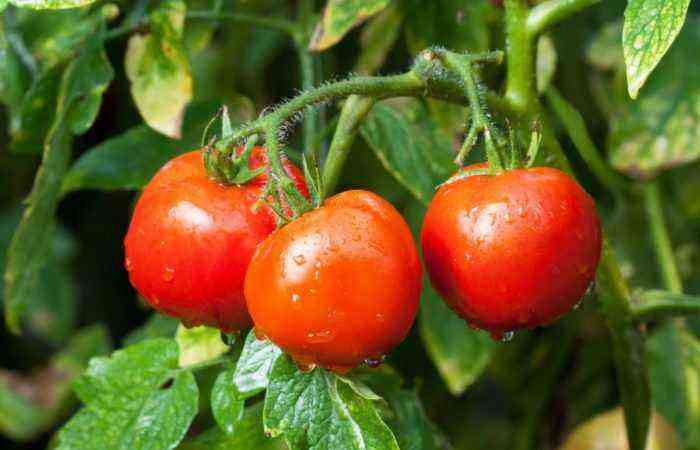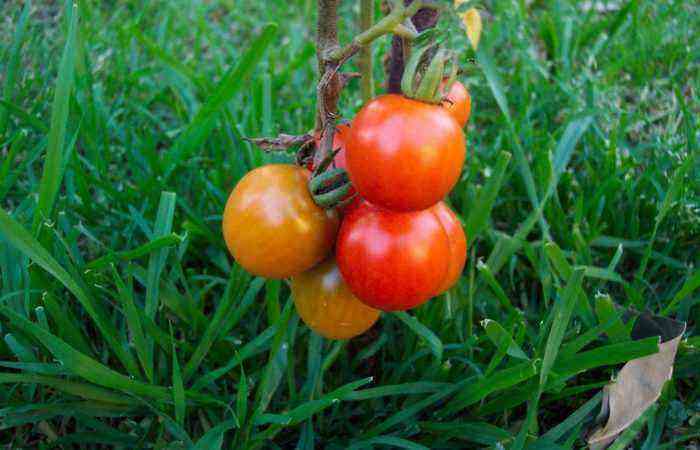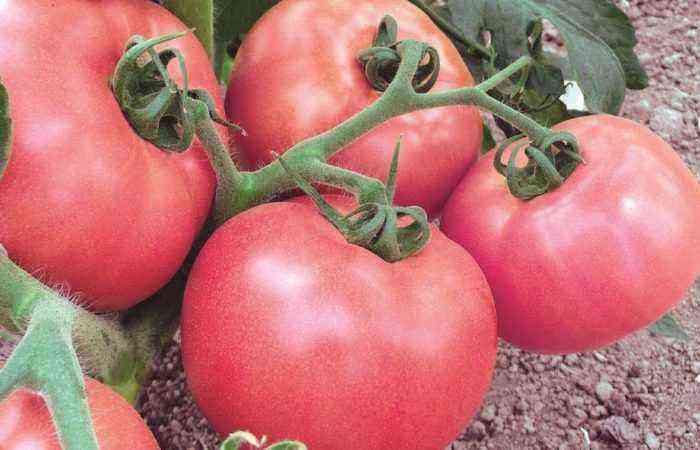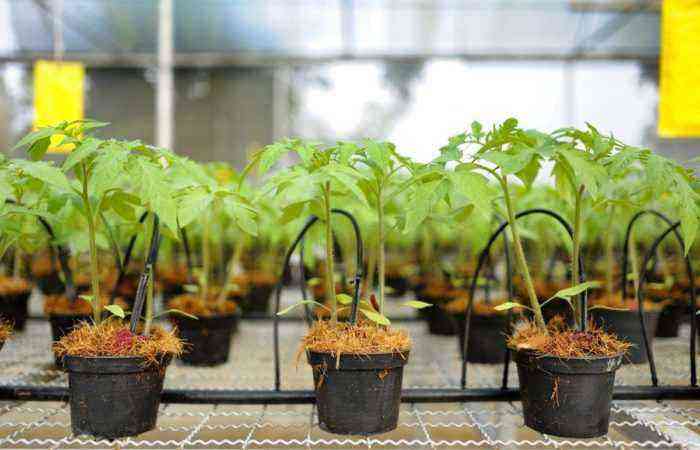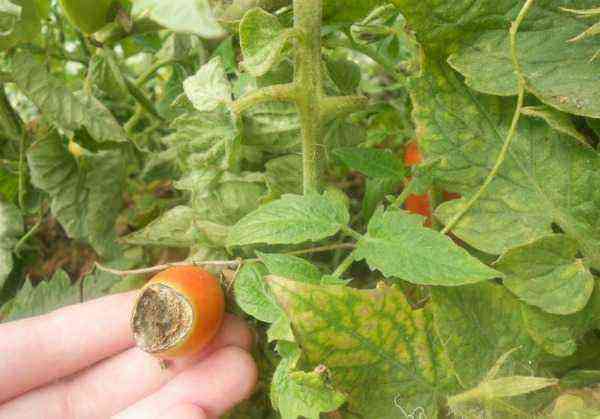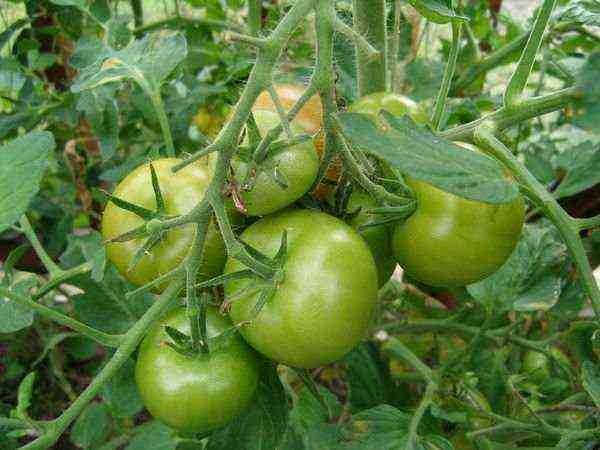Tomatoes are the most classic crop for greenhouses. Breeders have bred many varieties intended for growing indoors. This can be done not only in the cold period – many gardeners plant bushes in cultivation facilities in the summer (this is especially true in regions above the Moscow region).
At what distance should tomato bushes be planted in a greenhouse
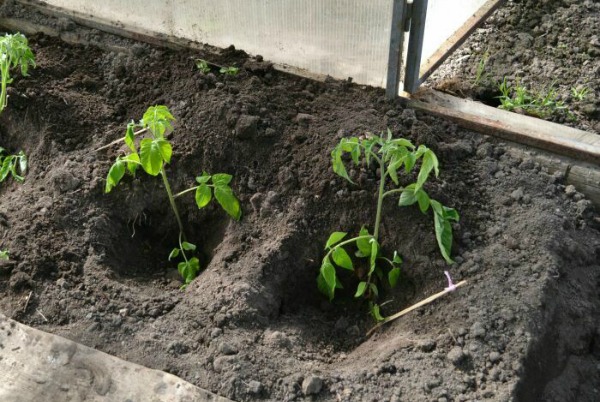
Some farmers have glazed heated greenhouses, while others have film greenhouses for the spring-summer period. The specificity of growing crops depends on this. The variety of tomatoes is also taken into account – a scheme is chosen according to which specific bushes should be planted.
Low-growing
It would seem that compact plants should not take up so much space. But with tomatoes, the principle is different. Low-growing varieties do not stepchild, so a plant with several stems needs more space.
The distance between the bushes is maintained in winter and spring greenhouses 40 cm, in summer – 0,5 m. If these are boles and determinants, 1 stem is left on the plant, which allows you to make gaps slightly smaller (30 cm).
Tall
Despite the fact that these varieties are formed in 1 or 2 trunks, the distance between the bushes is maintained on the order of 70-80 cm. This is necessary in order to more conveniently care for the plants, carry out garters and harvest.
The best varieties of tomatoes for a polycarbonate greenhouse
Landing patterns
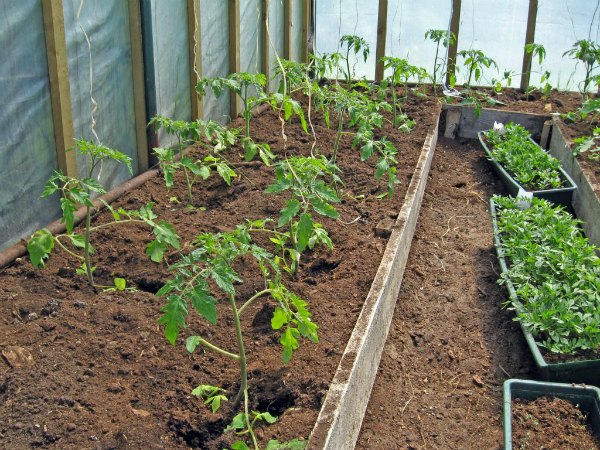
When planting tomato seedlings in cultivation facilities, a tape scheme is usually used. The parameters in this case are maintained based on the characteristics of the culture.
Table 1: Greenhouse tomato planting patterns
Varieties Distance, cm between ribbons between rows undersized 80-90 50 tall 90-100 60
When growing tomatoes on a rack, an ordinary method is used with a distance of 60 cm. The gap between plants is 40 cm.
The number of bushes for the greenhouse 3 by 4 and 3 by 6
Knowing the size of the greenhouse and the distances in the planting schemes, it is not difficult to make calculations for the number of seedlings. The beds are formed along the long side of the structure. In this case, the length of the rows will be 4 and 6 m.
With a greenhouse width of 3 m, the summer resident will be able to lay one tape in 2 rows in the center and in the 1st row along the side walls. There are 4 rows in total.
Table 2: Average calculation results
Varieties Quantity per 1 row, bushes Total bushes 3×4 m 3×6 m undersized/standard 10/14 14/20 40/56 and 56/80 tall 7 9 28 and 36
If you plan to plant bushes of different heights in the same greenhouse, then it is better to take the central tape for tall ones, and give side rows for undersized ones. If you place the plants in a checkerboard pattern, then the bed can be slightly compacted.
How to plant tomatoes in a greenhouse
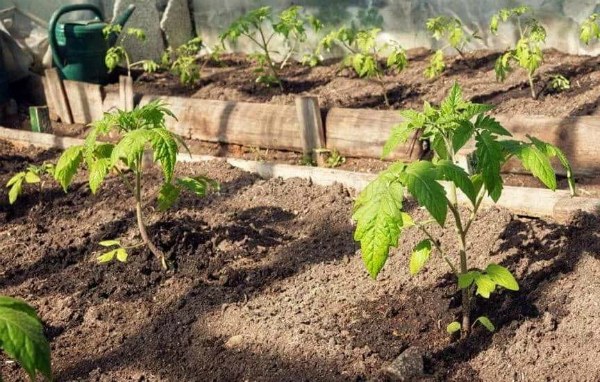
Prepare a closed room in advance, assessing its sanitary condition and removing the remains of precursor crops. The first step in the new season is soil preparation. It is dug up to a depth of 25-30 cm. At the same time, compost (1,5-2 buckets / sq.m) and mineral water are added under the shovel:
- simple (or double) superphosphate – 100 (50) g;
- potassium chloride – 30 g;
- potassium magnesia – 50 g;
- sulfates: iron and copper – 5 g each.
If cucumbers were grown on these beds before planting tomatoes, then instead of compost, crushed sphagnum peat or sawdust (a bucket of 1 sq.m.) is added to the soil when digging. Nitrogen fertilizers are not used at this time.
Then plant tomatoes next year. What to plant after tomatoes
planting tomatoes
A day or two before planting seedlings in the ground, the beds are thoroughly soaked with water to a depth of 10-15 cm. Holes are formed under each bush on a flat surface according to the chosen scheme.
To make the rows even, and the landing step was maintained, it is recommended to use a stretched cord and a marker.
For cultivation choose only well-developed healthy seedlings. It is lowered into the ground vertically, deepening along the cotyledons. Those tomatoes that will develop on the trellis are immediately tied to a pre-stretched string. Having finished with planting, the beds in the aisles are loosened and leveled with a rake.
Care of tomatoes
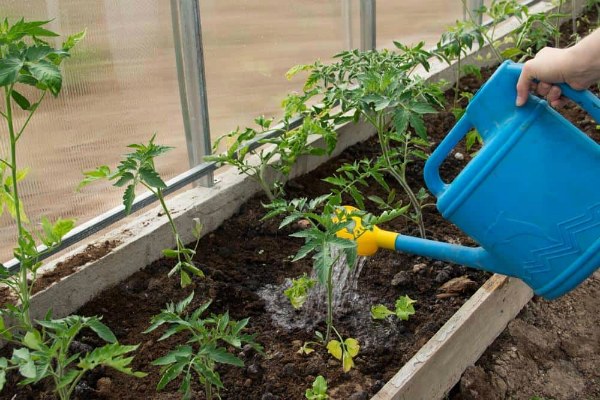
Growing tomatoes in greenhouses requires compliance with the basic regimes. They will change slightly depending on the season.
Table 3: Modes for growing tomatoes in a greenhouse
Mode In heated winter In spring Summer-autumn turnover Temperature*
The soil warms up to 18-20 degrees. The air temperature changes according to the phase of development of tomatoes:
– before flowering 22-24 ° on a sunny day and 18-20 on an overcast day; at night 15-16°;
– budding – indicators are raised by a couple of degrees;
– fruiting – the temperature rises by another 2 °
Throughout the entire period, the same temperature indicators are maintained:
– on a sunny day 21-23 °;
– in cloudy 18-20;
– at night 15-16
The mode changes depending on the month:
– July-August: 24-26с (18-20п) during the day; 16-17 at night;
– September-October: on a sunny day they lower by 4 °, on a cloudy day by 1; at night for 2;
– November: 18-20с (17-19п) during the day, 14-15 at night
The temperature in the soil is maintained at 17-18 ° throughout the season
Humidity To improve pollination, a relatively dry climate is maintained in the greenhouse Watering ** Moderate, as the soil dries up with water 20-25 degrees Watering is rare, but plentiful. The soil should be wetted to the entire depth of the fertile layer. Water is used warm, not lower than 15 ° In the summer months, they adhere to the spring regime. From September to November, they gradually switch to winter. Top dressing is carried out in stages:
– after rooting;
– during the first ovaries;
– during fruiting
Use a mixture of urea, superphosphate, potassium sulfate
Feed tomatoes 4-6 times per season, maintaining an interval of 2-3 weeks
The composition of fertilizers depends on the development phase:
– at the beginning of the growing season, the ratio of potassium and nitrogen is 3:1 (or 2:1);
– after fruit set – 1:1 (or 1:2)
They fertilize less often compared to other periods and do not bind to development phases. Use phosphorus-potassium supplements
*The air in the greenhouse should not rise above 30 degrees. Otherwise, neither pollination of plants nor fruit set will occur.
** Watering is carried out in the 1st half of the day, so that by night you can safely open the greenhouse for ventilation (a great way to reduce air humidity)
On tall bushes, the formation of the stem is carried out. In varieties with continuous growth, development of more than 2 m in height is not allowed (pinching the apex point).
Symptoms of violation of the regimes

When growing tomatoes indoors, compliance with the regimes determines the quality of the future crop. The development of crops must be closely monitored in order to correct deviations in time.
Table 4: Signs of deviation in growing regimes
Factor Description
Eating disorder
Nitrogen
The lack of a component is manifested by reddish-purple veins on the leaves. Stems thin, become fibrous and hard
Excess chemical leads to rapid growth of bushes, but slows down flowering. Leaves turn deep green
Phosphorus
With a deficiency of cotyledons in tomatoes, they begin to actively grow upwards. Their undersides take on a purple-red hue. The leaves curl up, the plant itself is delayed in development
Excessive application of phosphorus provokes the development of chlorosis
potassium
Deficiency slows down the growth of bushes, making them sluggish. Leaves become brittle. First, their edges are wrapped, then bronze spots appear; tissues turn brown and die
Due to the excess, the flower stalks are shortened, the color of the flowers worsens, the lower leaves turn yellow
Magnesium Deficiency leads to chlorosis. The upper unpaired slice of leaves turns pale
Incorrect watering
Excess moisture leads to root rot. The color of the leaves fades, they become flabby and sag. Growing brown putrefactive spots appear on the plates. A bush can drop all foliage overnight. Disadvantage Tomatoes slow down in growth. The leaves will wilt, starting to turn yellow at the tips. Then they turn brown, shrivel and fall off. If the problem arose at the flowering stage, but the flowers also crumble
Humidity not maintained
Low Leaves lose their elasticity, and their tips turn brown and wrinkle. The edges are yellowing. The flowers dry up, later fall High On any part of the bush, putrefactive spots appear, not similar to those that indicate infection with infectious diseases
Downed temperature regime
High temperature From prolonged intense heat, the ground part of the tomatoes turns yellow, starting from the tops. If you do not take action, the bush turns brown and fades. The tips of the sheets dry out, the plates sometimes curl. The roots also suffer, which ends tragically – the plant dies
Prolonged violation of the basic regimes in the greenhouse will lead to the development of rot, the appearance of powdery mildew, late blight, anthracnose, fusarium and other equally dangerous problems.
Useful Tips
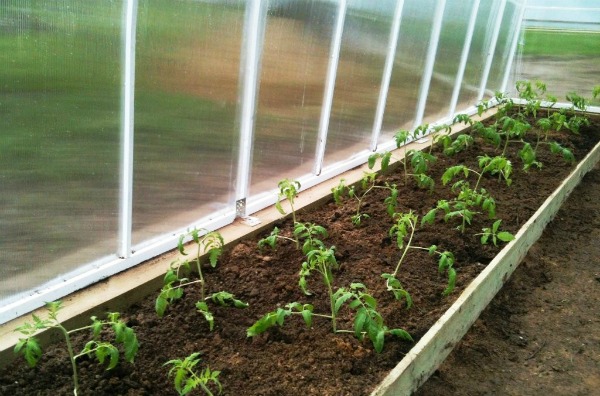
In order for tomatoes to develop well in closed ground conditions and not get sick, it is recommended to listen to the advice of experienced farmers:
- when growing a crop in greenhouses, a limited amount of soil is used, which is quickly depleted if it is not fed; when applying fertilizers to the beds, the dosage is made somewhat larger than for open-air plots;
- the soil itself in greenhouses should be updated every year with a layer of 5-10 cm; if tomatoes are grown in racks, then the soil is completely changed every 2 years;
- controlling the temperature regime, you should not be limited to 2 thermometers (on the soil and near the ridge) – it is better to distribute them evenly throughout the greenhouse;
- do not ignore the ventilation of the structure – this is one of the methods for regulating modes;
- when watering, it is important not only the amount of moisture, but the temperature of the water – a cold liquid will lead to a failure of immunity;
- if plants signal a lack of a particular nutrient, you should not add a whole complex to the beds – use only mono-fertilizer;
- when tomatoes lack moisture, when adjusting the regime, sudden changes should not be allowed – the soil is irrigated in small volumes, watering the plants every other day, until the negative symptoms disappear completely.
Phytohormones such as “Auxin” will help to increase the resistance of tomatoes to violations of agricultural technology.
Low-growing and tall tomatoes – planting in a greenhouse: video
How far apart should tomatoes be planted? How many stems to form? – video
Only the creation of comfortable conditions for growing tomatoes in cultivation facilities will allow you to enjoy fresh fruits all year round. This will be the key to large harvests, the surplus of which can be sold through the market in order to increase your well-being.


